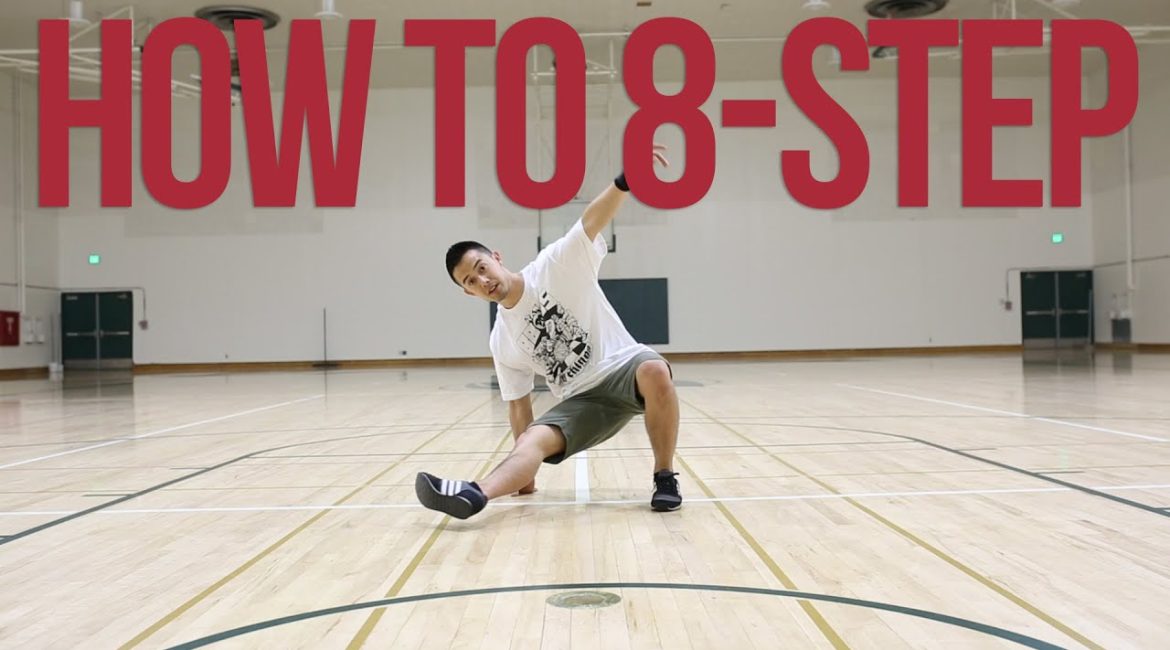Breaking, or breakdancing as it’s more commonly known, is a dance form that requires not just rhythm and athleticism but also a deep understanding of various footwork patterns. One of the essential patterns you need to learn is the 8-Step. This footwork sequence is more than just a series of steps; it’s a foundation that can help elevate your breaking skills to new heights. In this tutorial, we will explore how to execute the 8-Step effectively, differentiating it from similar patterns like the 6-Step, and providing tips on making it a seamless part of your dance repertoire.
Introduction to the 8-Step
The 8-Step, as taught by the influential breaker Tet, is a dynamic footwork pattern that adds complexity and flair to your foundational breaking skills. Originating from the same basics that inform the 6-Step, the 8-Step introduces additional movements that create a distinct rhythmic and visual impact. It’s a pattern that moves in a circular motion, differing from other footwork that may progress side-to-side or in a straight line.
The 6-step is a fundamental sequence in breakdancing, consisting of six steps that form the basis of footwork. During these movements, your feet step around your upper body, and you place and move your hands for support. The 6-step can be repeated indefinitely because it ends in the same position where it started. A well-executed 6-step requires balance, rhythm, flow, and perfect form.
When you begin breakdancing, you’ll typically start by learning the 6-step, as it is one of the most crucial basic footwork steps. Mastering the 6-step will pave the way for learning other footwork moves, such as the 2-step, 3-step, and 5-step, which incorporate elements of the 6-step. Therefore, mastering the 6-step first will facilitate learning these other footwork patterns.
Learning the Basic Movements
- Start in Push-up Position: Like many breaking footwork sequences, the 8-Step begins in a push-up position. This stance prepares you for a range of motion and provides the stability needed for swift foot movements.
- Execute the Initial Steps: The first four steps of the 8-Step are identical to those of the 6-Step. If you are not familiar with the 6-Step, it’s essential to learn that first as it forms the base for understanding the 8-Step.
- Step One: Move your right hand next to your left hand while swinging your left leg under your right leg.
- Step Two: Continue the motion by bringing your right leg under your left leg.
- Step Three and Four: Complete the circular motion by positioning yourself back into the starting push-up position.
- Introducing Unique Elements: The uniqueness of the 8-Step comes into play in the subsequent steps:
- Step Five and Six: Instead of continuing the motion like a 6-Step, kick out your left leg and then bring it back, stepping backward.
- Step Seven and Eight: Complete the pattern by stepping back with both feet, each step distinctly marking the completion of the circle.
Key Differentiation
The critical element in the 8-Step that sets it apart from the 6-Step is the emphasis on the kick-out in steps five and six. This movement not only adds a distinctive flair but also increases the complexity of the pattern, making it visually appealing and rhythmically engaging.
Practice and Mastery
To truly integrate the 8-Step into your dance repertoire, you must commit to intensive practice. The goal is to perform these steps so frequently that they become second nature, allowing you to execute them without conscious thought during performances or battles.
Drill the Steps
Repetition is the key to muscle memory. Practice the 8-Step continuously, focusing initially on accuracy before building up speed. It’s crucial to ensure each step is precise and sharp to maintain the flow and aesthetic of the sequence.
Video Analysis
Record your practice sessions. Video analysis allows you to critically assess your form, timing, and execution. This feedback is invaluable as it helps you identify areas for improvement that you might not notice in real-time.
Get Creative
Once you’re comfortable with the basic 8-Step, start experimenting with variations. Add arm movements, body waves, or change levels to personalize the step. Creativity in footwork is not just about changing steps but also about how you blend these movements into your overall style.
Integrating the 8-Step into Your Freestyle
The ultimate test of any footwork pattern is how well it integrates into your freestyle:
- Freestyle Sessions: Regularly include the 8-Step in your freestyle sessions. Experiment with transitioning in and out of the 8-Step from other footwork patterns, top rocks, and freezes.
- Music Adaptability: Practice the 8-Step to various music types to understand how it fits within different rhythmic structures. This adaptability will prove essential during battles, where music can vary significantly.
Conclusion: Enhancing Your Dance Vocabulary
The 8-Step is more than just a series of movements; it’s a testament to your skill, precision, and creativity as a breaker. By mastering this step, you not only enhance your technical skills but also deepen your expressive capabilities. Remember, the essence of breaking is in your ability to convey emotion and narrative through your movements. With the 8-Step firmly embedded in your arsenal, you’ll be well on your way to captivating audiences and judges alike, bringing freshness and dynamism to every performance. Keep pushing the boundaries of what you can achieve with your footwork, and let every step take you closer to breaking excellence.


Leave a reply